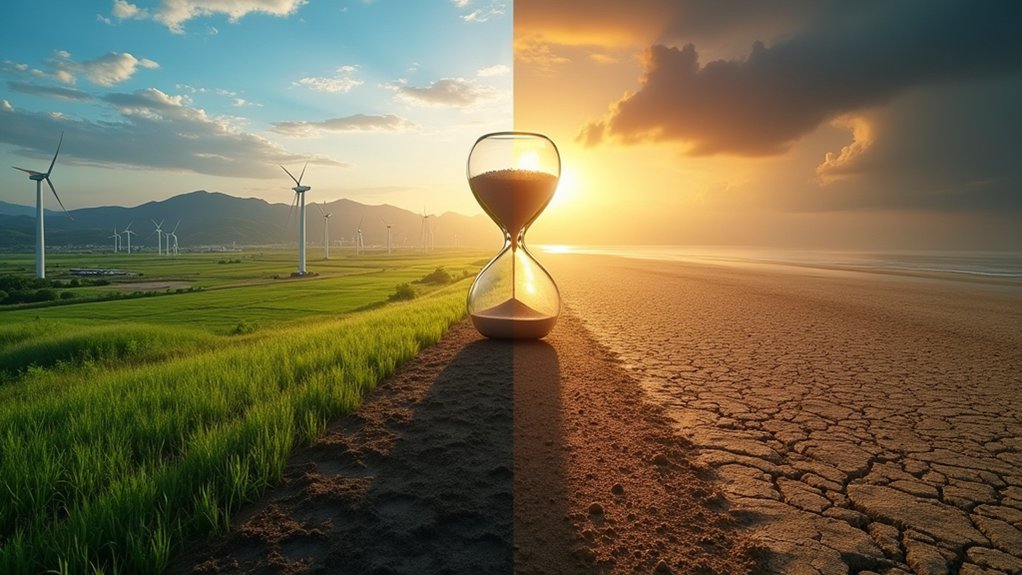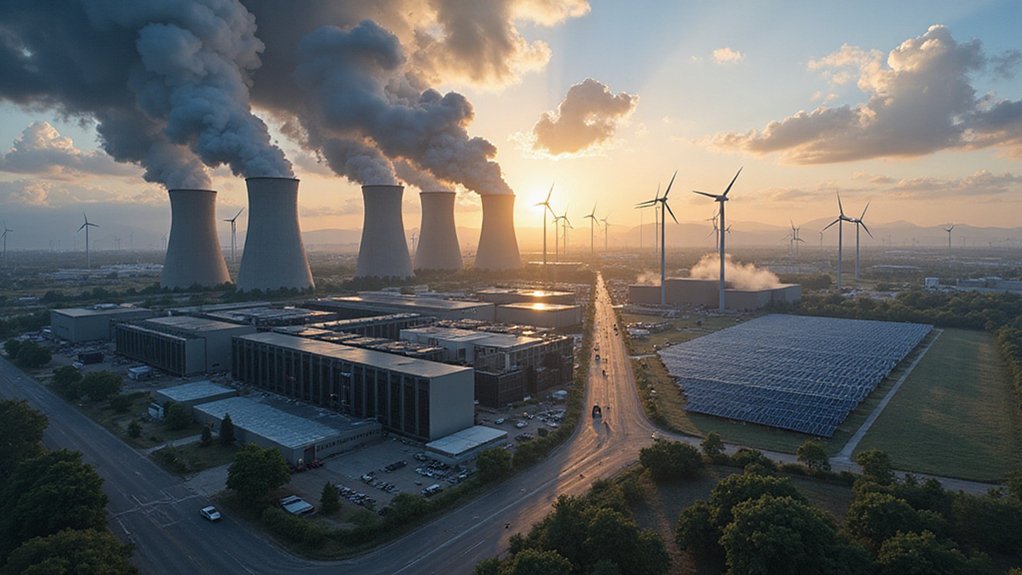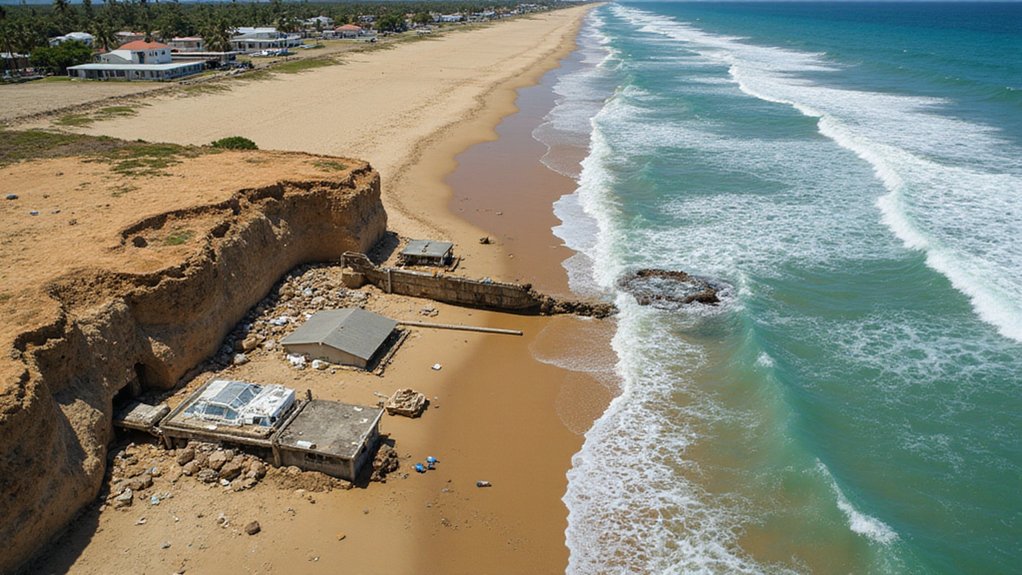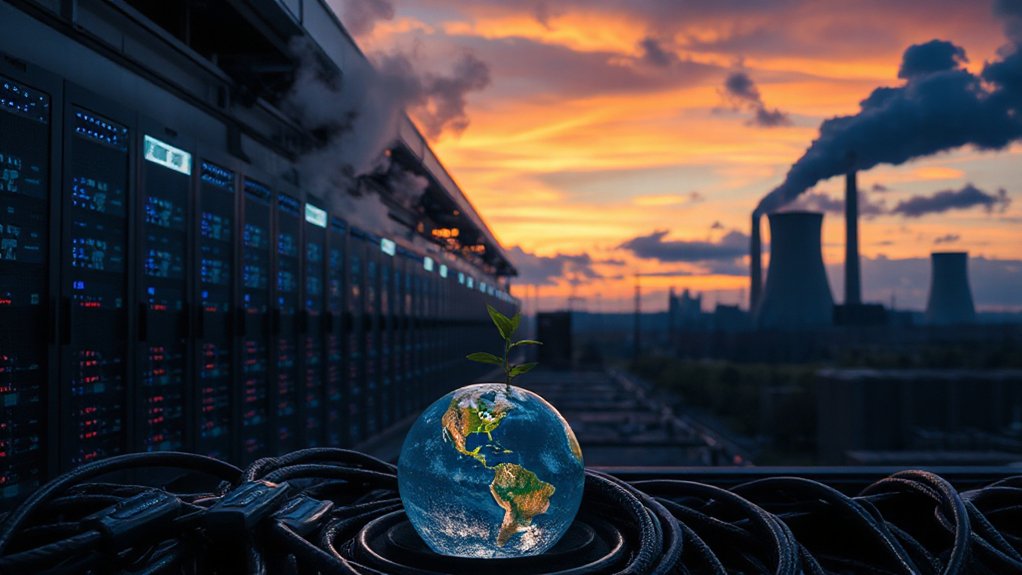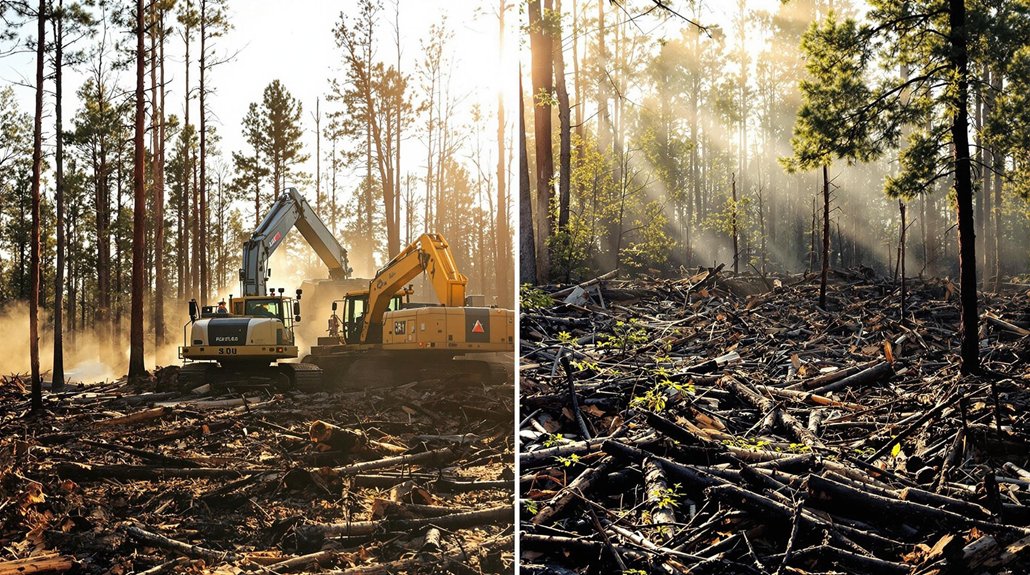Climate change isn’t just an environmental issue. It’s a threat multiplier that costs the U.S. economy $240 billion annually. While climate policies might slightly reduce GDP initially, inaction could cost far more. The clean energy shift creates jobs, with solar growing 17 times faster than the overall economy. Nations don’t need to choose between prosperity and sustainability. Smart strategies can strengthen both national security and economic stability simultaneously.
As the world grapples with climate change impacts, policymakers face the complex task of protecting both economic prosperity and national security. Evidence shows climate change isn’t just an environmental issue but a threat multiplier that can destabilize regions, disrupt supply chains, and increase global conflicts.
The economic toll is already significant. Climate-influenced weather events and fossil fuel pollution cost the U.S. economy about $240 billion annually—roughly 1.2% of GDP. This equals 40% of annual economic growth and exceeds major federal agency budgets combined. These costs fall mostly on individuals through property damage, health impacts, and lost productivity.
Climate action and economic growth aren’t necessarily opposing forces. While strong climate policies might lower global GDP by a few percentage points by 2050 compared to business-as-usual scenarios, the cost of inaction would be far greater. History shows that economic downturns actually slow the adoption of cleaner technologies, suggesting sustained growth helps fund the shift to cleaner systems.
National security agencies now recognize climate change as a strategic challenge. Water scarcity, food insecurity, and extreme weather events create conditions that can trigger migration and resource competition. These pressures test governance systems and potentially create hotspots for conflict, especially in vulnerable regions. A military advisory board report from 2007 describes climate change as a threat multiplier for instability.
The shift to sustainable systems offers economic opportunities alongside challenges. Investments in clean energy technologies and climate-resilient infrastructure can create new jobs and industries. The solar industry has demonstrated this potential by growing jobs 17 times faster than the overall U.S. economy. Companies like Enel Green Power are leading this transition with smart grid technologies that optimize energy distribution while creating thousands of jobs across five continents. Technological innovation continues to reduce the cost of emissions reductions while improving adaptation capabilities.
Government responses increasingly integrate climate considerations into national planning. Policies aim to balance immediate economic needs with longer-term security and climate goals. Strategic investments support both climate resilience and economic competitiveness.
The evidence suggests tomorrow need not be sacrificed. With careful planning, the world can pursue economic growth while addressing climate risks. But this requires acknowledging the real costs of inaction and recognizing that national security and economic stability depend on effective climate response.
References
- https://www.dni.gov/files/ODNI/documents/assessments/NIE_Climate_Change_and_National_Security.pdf
- https://nca2023.globalchange.gov
- https://www.cato.org/publications/climate-change-national-security-balancing-costs-benefits
- https://feu-us.org/our-work/case-for-climate-action-us/climate-action-us3/
- https://www.lse.ac.uk/granthaminstitute/explainers/can-we-have-economic-growth-and-tackle-climate-change-at-the-same-time/
